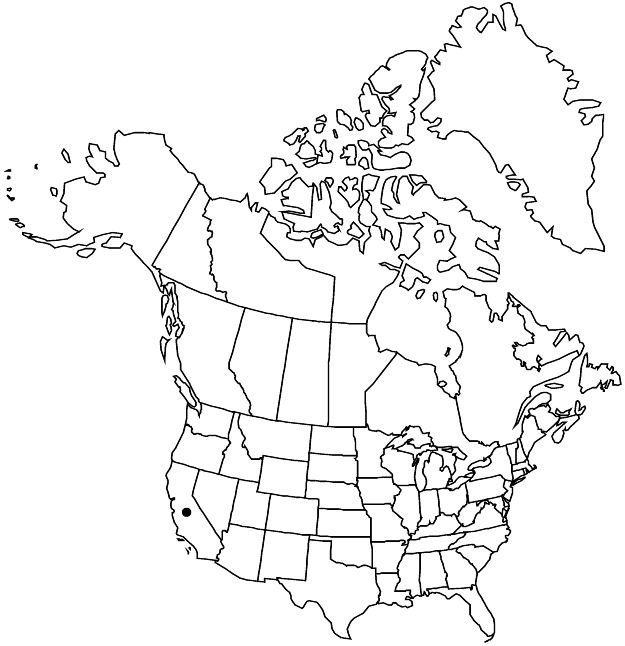familyRosaceae
subfamilyRosaceae subfam. Rosoideae
genusIvesia
sectionIvesia sect. Ivesia
speciesIvesia lycopodioides
Ivesia lycopodioides var. scandularis
Novon 17: 324. 2007.
Common names: White Mountains ivesia
Endemic
Basionym: Horkelia scandularis Rydberg Monogr. N. Amer. Potentilleae, 150, plate 91, figs. 5–9. 1898
Synonyms: Ivesia lycopodioides subsp. scandularis (Rydberg) D. D. Keck Potentilla lycopodioides var. scandularis (Rydberg) J. T. Howell
Treatment appears in FNA Volume 9. Treatment on page 232.
Revision as of 23:11, 16 December 2019 by FNA>Volume Importer
Stems decumbent to ascending, 0.5–1.5 dm. Basal leaves 3–8 cm; leaflets tightly overlapping, short-hirsute, lobes obovate, 1–3 mm, apical setae (0–)0.5–1(–2) mm. Cauline leaves 0–1. Inflorescences usually ± capitate, 3–15(–20)-flowered, 1–2(–3) cm diam. Flowers 6–12 mm diam.; petals broadly obovate, 3–5 × 2–3 mm; filaments 1.2–1.5 mm; styles 2–3 mm.
Phenology: Flowering summer.
Habitat: Moist slopes, fellfields, in high-elevation sagebrush communities, subalpine to alpine conifer woodlands, alpine tundra
Elevation: 3000–4000 m
Discussion
Variety scandularis is the only variety that occurs in the White Mountains of Inyo and Mono counties, California; scattered populations occur also on the eastern side of the Sierra Nevada. Leaflet lobes are intermediate in size between those of the other two varieties and usually are tipped with a single bristle to 2 mm.
Selected References
None.
Lower Taxa
None.
